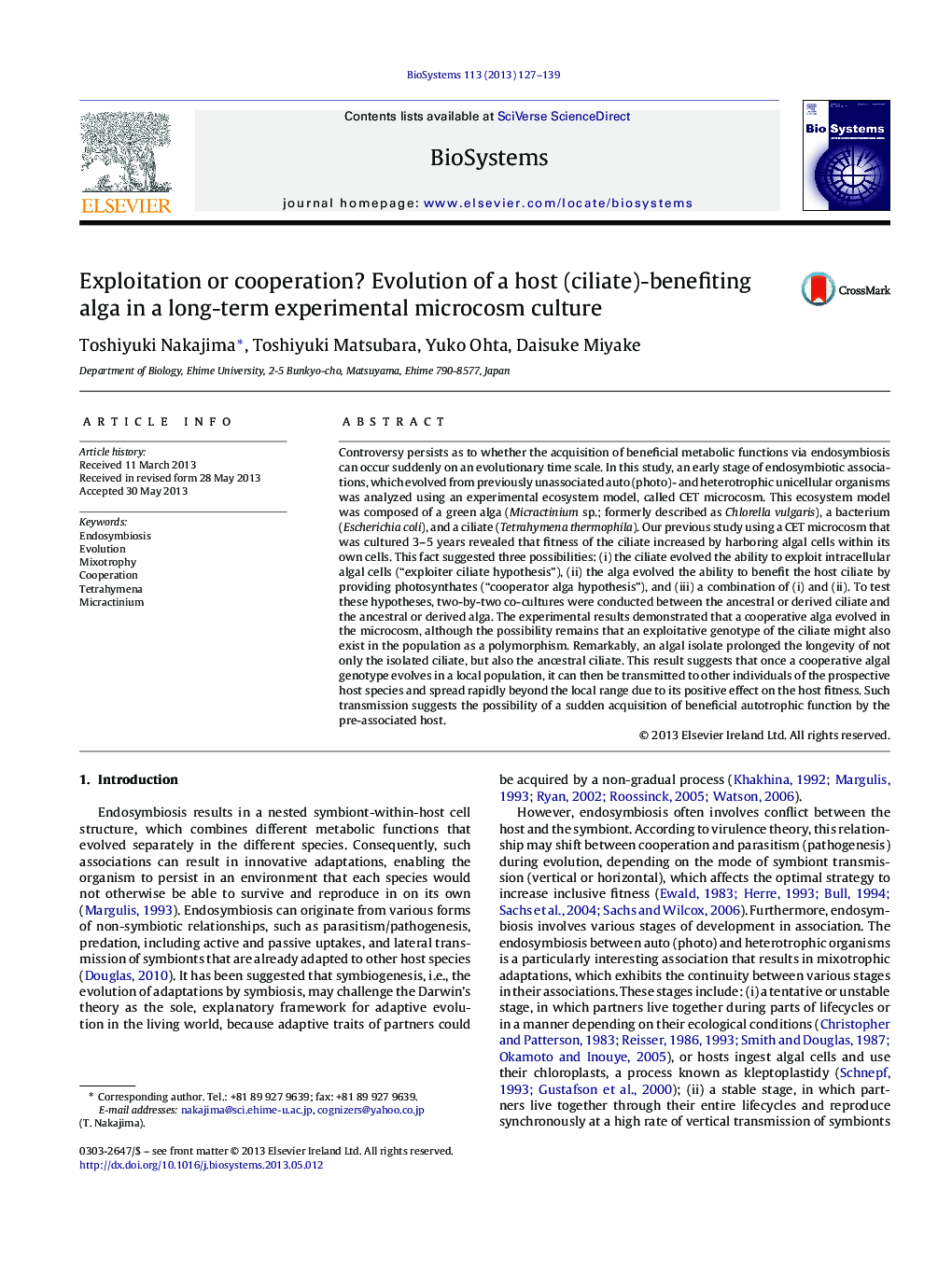| کد مقاله | کد نشریه | سال انتشار | مقاله انگلیسی | نسخه تمام متن |
|---|---|---|---|---|
| 2075995 | 1079403 | 2013 | 13 صفحه PDF | دانلود رایگان |
عنوان انگلیسی مقاله ISI
Exploitation or cooperation? Evolution of a host (ciliate)-benefiting alga in a long-term experimental microcosm culture
دانلود مقاله + سفارش ترجمه
دانلود مقاله ISI انگلیسی
رایگان برای ایرانیان
کلمات کلیدی
موضوعات مرتبط
مهندسی و علوم پایه
ریاضیات
مدلسازی و شبیه سازی
پیش نمایش صفحه اول مقاله

چکیده انگلیسی
Controversy persists as to whether the acquisition of beneficial metabolic functions via endosymbiosis can occur suddenly on an evolutionary time scale. In this study, an early stage of endosymbiotic associations, which evolved from previously unassociated auto (photo)- and heterotrophic unicellular organisms was analyzed using an experimental ecosystem model, called CET microcosm. This ecosystem model was composed of a green alga (Micractinium sp.; formerly described as Chlorella vulgaris), a bacterium (Escherichia coli), and a ciliate (Tetrahymena thermophila). Our previous study using a CET microcosm that was cultured 3-5 years revealed that fitness of the ciliate increased by harboring algal cells within its own cells. This fact suggested three possibilities: (i) the ciliate evolved the ability to exploit intracellular algal cells (“exploiter ciliate hypothesis”), (ii) the alga evolved the ability to benefit the host ciliate by providing photosynthates (“cooperator alga hypothesis”), and (iii) a combination of (i) and (ii). To test these hypotheses, two-by-two co-cultures were conducted between the ancestral or derived ciliate and the ancestral or derived alga. The experimental results demonstrated that a cooperative alga evolved in the microcosm, although the possibility remains that an exploitative genotype of the ciliate might also exist in the population as a polymorphism. Remarkably, an algal isolate prolonged the longevity of not only the isolated ciliate, but also the ancestral ciliate. This result suggests that once a cooperative algal genotype evolves in a local population, it can then be transmitted to other individuals of the prospective host species and spread rapidly beyond the local range due to its positive effect on the host fitness. Such transmission suggests the possibility of a sudden acquisition of beneficial autotrophic function by the pre-associated host.
ناشر
Database: Elsevier - ScienceDirect (ساینس دایرکت)
Journal: Biosystems - Volume 113, Issue 3, September 2013, Pages 127-139
Journal: Biosystems - Volume 113, Issue 3, September 2013, Pages 127-139
نویسندگان
Toshiyuki Nakajima, Toshiyuki Matsubara, Yuko Ohta, Daisuke Miyake,